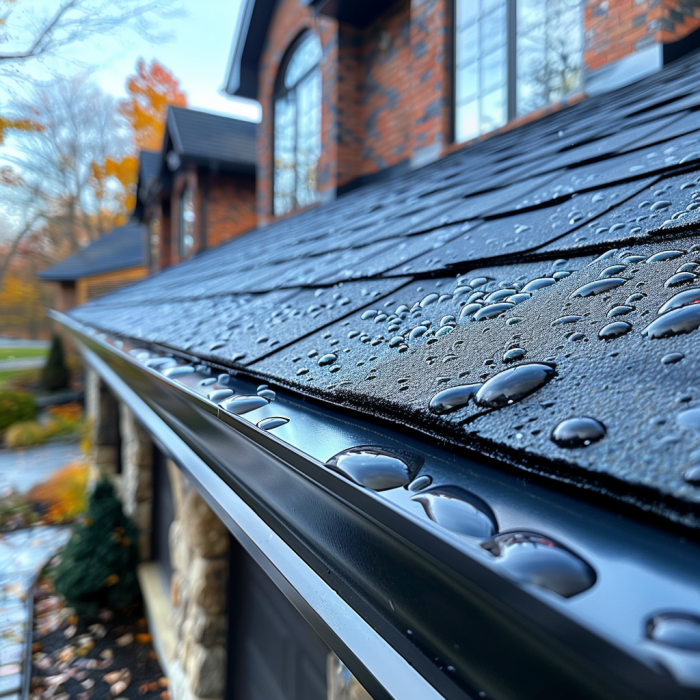
Best Material for Eavestrough: A Comprehensive Guide
Table of Contents
- What is an Eavestrough?
- Why Eavestroughs Are Important
- Best Materials for Eavestroughs
- Installation of Eavestroughs
- Maintaining Your Eavestroughs
- Conclusion
- FAQs About Eavestrough Materials
Eavestroughs play a crucial role in protecting your home from water damage. By directing rainwater away from your home’s foundation and walls, these simple yet effective systems help maintain the structural integrity of your property. Choosing the right material for your eavestrough is key to ensuring it performs well and lasts for years. This article will guide you through the best materials available for eavestroughs and help you decide which one is right for your home.
What is an Eavestrough?
Eavestroughs, often called gutters, are channels that collect rainwater from the roof and direct it away from the house. This helps prevent water from pooling around the foundation, which can lead to leaks and structural damage.
Why Eavestroughs Are Important
The importance of eavestroughs cannot be overstated. They protect your home by:
- Preventing soil erosion around the foundation
- Avoiding water damage to basements and crawlspaces
- Reducing the risk of roof damage due to standing water
Best Materials for Eavestroughs
When choosing the material for your eavestroughs, consider factors such as durability, cost, maintenance, and appearance. Here are the most common materials used:
Aluminum Eavestroughs
Pros:
- Lightweight and easy to install
- Resistant to rust and corrosion
- Available in a variety of colors and can be painted
Cons:
- Can dent or bend under heavy impact
- May expand and contract with temperature changes
Vinyl Eavestroughs
Pros:
- Inexpensive and very easy to install
- Resistant to rust, rot, and erosion
- Does not require painting as the color is consistent throughout
Cons:
- Becomes brittle in extreme cold
- Can be damaged by heavy snow or ice
Steel Eavestroughs
Pros:
- Extremely durable and sturdy
- Can handle heavy snow and ice without damage
- Available in various colors and finishes
Cons:
- Prone to rust unless treated or galvanized
- Heavier, requiring more robust support structures
Copper Eavestroughs
Pros:
- Highly durable and long-lasting
- Develops a protective patina over time that resists corrosion
- Offers a unique, upscale look to the home’s exterior
Cons:
- Significantly more expensive than other materials
- Requires professional installation
Installation of Eavestroughs
Proper installation is key to the functionality of eavestroughs. Whether you opt for sectional or seamless types, ensure that they are securely attached to your home and have a slight incline towards the downspouts to prevent water pooling. For expert installation and top-quality materials, trust 401 Siding for all your eavestrough needs.
Maintaining Your Eavestroughs
Regular maintenance is essential to keep your eavestroughs in good working order. This includes:
- Cleaning out leaves and debris at least twice a year
- Checking for any signs of damage or wear
- Ensuring downspouts direct water away from the foundation
By following these maintenance tips, you can extend the life of your eavestroughs and protect your home from water-related issues.
Conclusion
Choosing the right material for your eavestrough is crucial for protecting your home from water damage. Each material has its own set of benefits and drawbacks, so consider what best meets your needs in terms of durability, maintenance, cost, and appearance. Whether you opt for aluminum, vinyl, steel, or copper, proper installation and regular maintenance are key to ensuring your eavestroughs function effectively and last for years to come. For the best eavestrough solutions, contact 401 Siding today.
FAQs About Eavestrough Materials
- How often should eavestroughs be replaced?
- What is the most cost-effective material for eavestroughs?
- Can I install eavestroughs myself?
- How do I choose the right size of eavestrough for my home?
- What are gutter guards and do I need them?
- How do changes in weather affect eavestrough materials?
